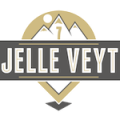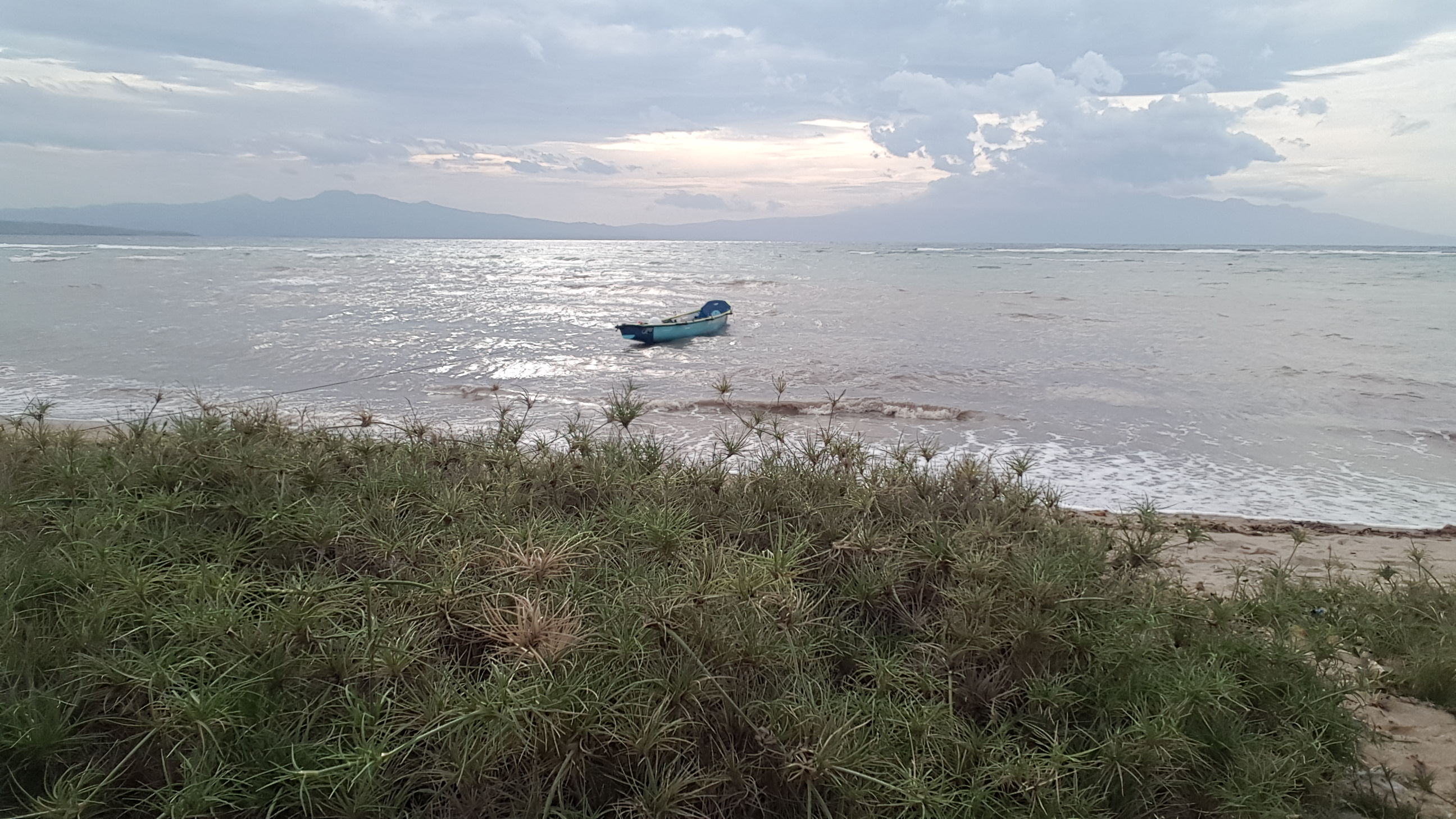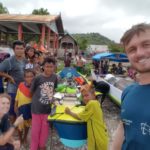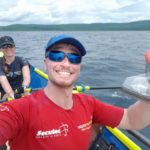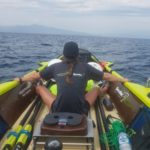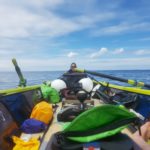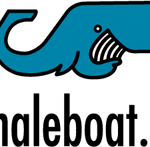After a good meal and a night in a soft bed at Sumbawa beach cottages, we prepared the boat to start the next stage of Jelle’s rowing expedition to the Carstenz pyramid in Papua. A local carpenter fixed a wooden bar to the nose of the boat to strengthen it for mooring onto rocky beaches and we scooped out a few liters of water after a day of extremely heavy rainfall. Because the rain had been going on for days, I started to doubt whether Jelle chose the right season to row. He explained the rain didn’t matter, but the currents did. In December the weather is worse, and the waves are higher because of the wind, but only then the currents are going east, which is needed for the bigger crossings.
Cc
Cc
We planned to row about 20 km per day: a distance Jelle can easily make on his own, to spare me a little and to make sure I would enjoy the trip For me, 20 km is 4 km longer than my longest training session on the ‘watersportbaan’ in Ghent, so Jelle told me I had to prepare to feel bad and try to enjoy it. Luckily, he called this distance ‘a mild training session’, to get into a good shape for the long crossings that are coming his way as he gets closer to Papua.
The first day, I learned that ‘feeling bad’ would get a whole new meaning here. I definitely had to get used to being on open water. Although we’d been training a lot, rowing on open sea is quite different in ways I didn’t expect. I tried to pretend I was strong, but the constant swinging of the boat and the burning sun kinda got to me. Somehow two ginger pills and regular dives into the water helped me through the day. Besides the sea sickness, it went great and we arrived on the next island at sunset Moyo, a tiny beach resort facing one of the most beautiful sunsets in the area. This would be the last bed and real meal in a while.
The next days gave us good wind and swell, pushing us forward in the right direction most of the time. At one point the waves were messy and high, and the wind pushed us into a bay with a large cliff. Luckily we could get back to our course when we were rowing together. As more days passed by, we realized that the rowing conditions were best in the morning between 6 and 12. In the afternoon, the wind got a lot stronger each time, creating a scary swell. We once had to turn back after leaving Kore bay, and wait it out. That same afternoon a local boat got into trouble, because it was too heavily loaded with coconuts for conquering the big waves. It was a huge relief to be able to help get it back onto shore. Not everything was bad and scary that day though; we also saw a group of dolphins (‘lumba lumba’) from about 200 meters, and some dinosaur-ish like bats in a big tree.
I have to admit that most of the days I was scared to get on shore. Once we were alone to get the boat out, but a steep beach and a shore break made it difficult: the waves crushed onto the boat and filled it with water, making it too heavy for the both of us to pull it out. Luckily, that only happened once. All the other days many people helped us to get the boat onto shore and brought us to a local shop for water and drinks. In each village we were offered free food, pillows, places to sleep and bathroom, in return for about a hundred selfies and pictures. Everywhere we went, we heard them call us ‘bule’ (tourist), but never meant in a bad way. A local English teacher in Kilo was so honoured to meet us, that he and his neighbour gave us a sarong and traditional Indonesian clothing.
The weather forecast for the next days is looking a whole lot friendlier to me, with smaller waves and softer winds. Exactly what we need to make a first bigger crossings to gilli Banta, a small uninhabited island, where we’ll probably celebrate New year

